Creation
The exact origins of theWinged Victory of Samothraceare not known.
This places its creation at the heart of theHellenistic period(323 BCE-31 CE).
The 18-foot sculpture depictsNike, the Greek goddess of victory.
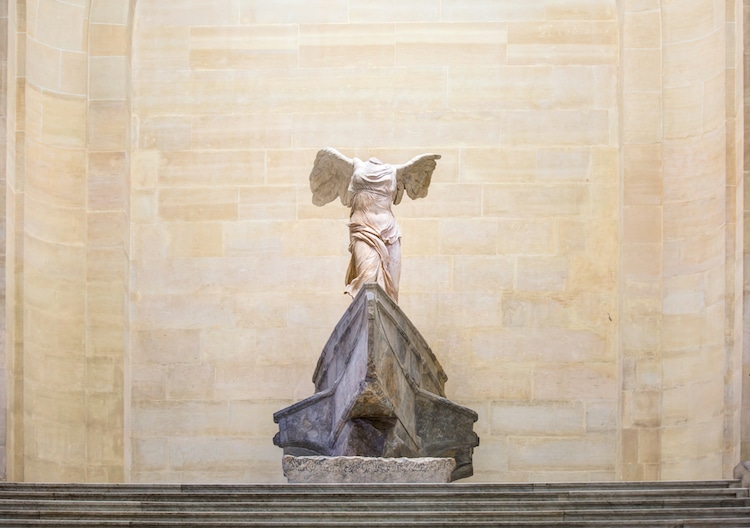
The Winged Victory of Samothrace (Photo:muratart’viaShutterstock)
This seaside shrine was dedicated to the Mystery religion, or secret cult, of the Great Mother.
Discovery
French diplomat and amateur archaeologistCharles Champoiseauunearthed theWinged Victoryin April of 1863.
Unfortunately, the hand had no way of being reattached to the sculpture, as the figure remained armless.
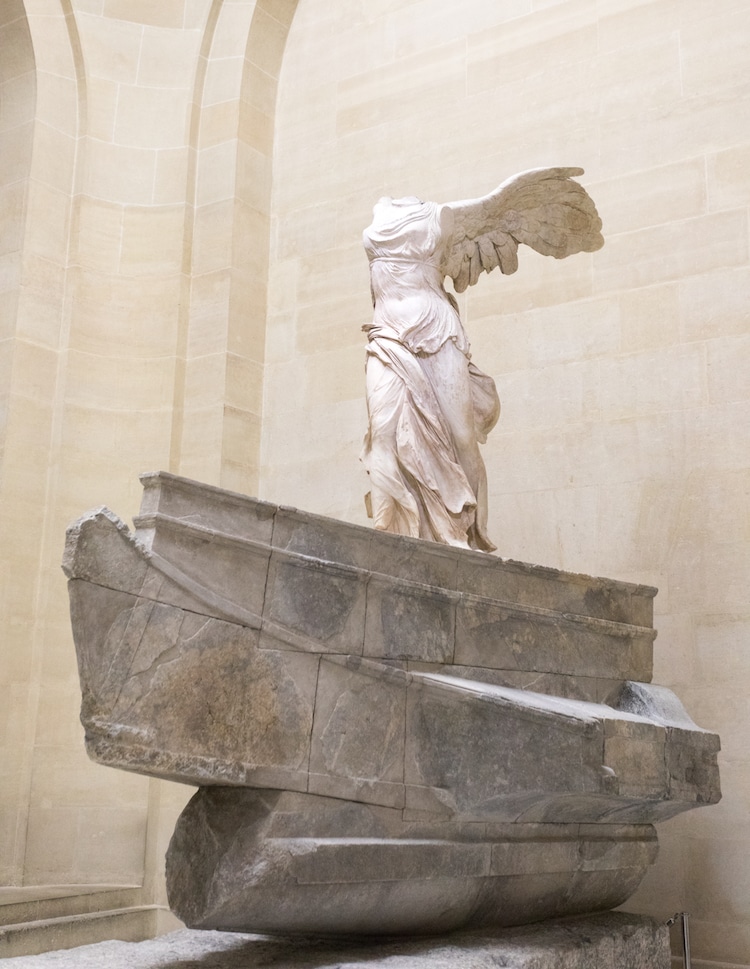
The Winged Victory of Samothrace (Photo:muratartviaShutterstock)
To suggest a body in motion, the artist positioned Nike in an asymmetrical stance.
Other famous sculptures that demonstrate this classical approach to conveying the human body areThe Walking ManbyRodinandMichelangelo’sDavid.
Another element that helps suggest movement is the billowing fabric draped across the figure’s body.
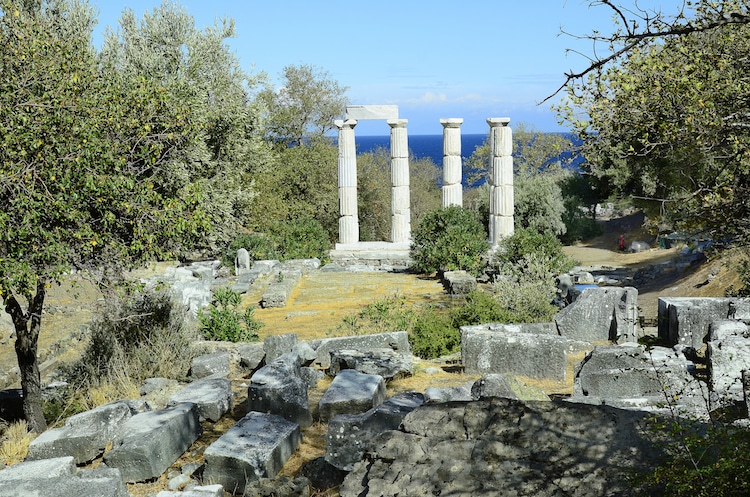
(Photo:fritz16viaShutterstock)
As Nike dramatically steps forward, the seemingly translucent garment twists around her waist and wraps around her legs.
Since making its debut at the Louvre in the 19th century, it has inspired countless artists.
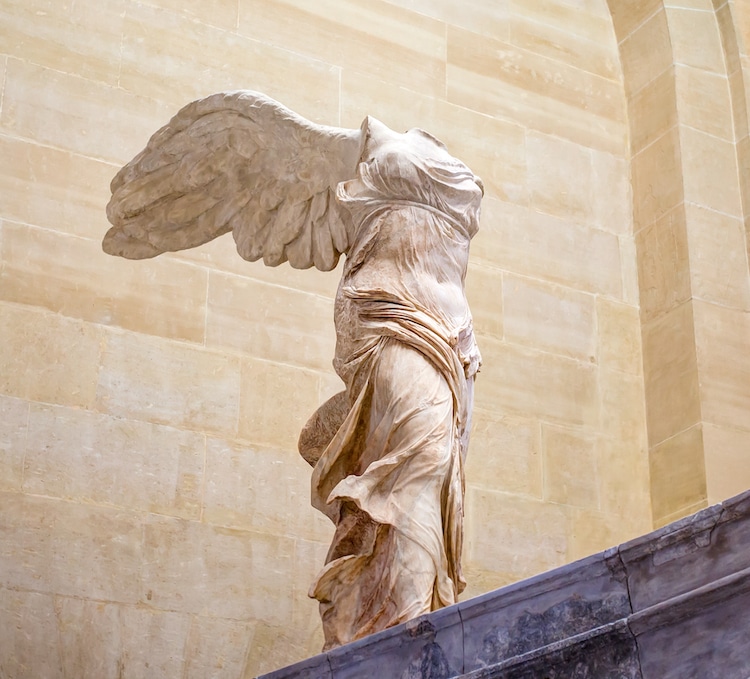
The Winged Victory of Samothrace (Photo:muratartviaShutterstock)
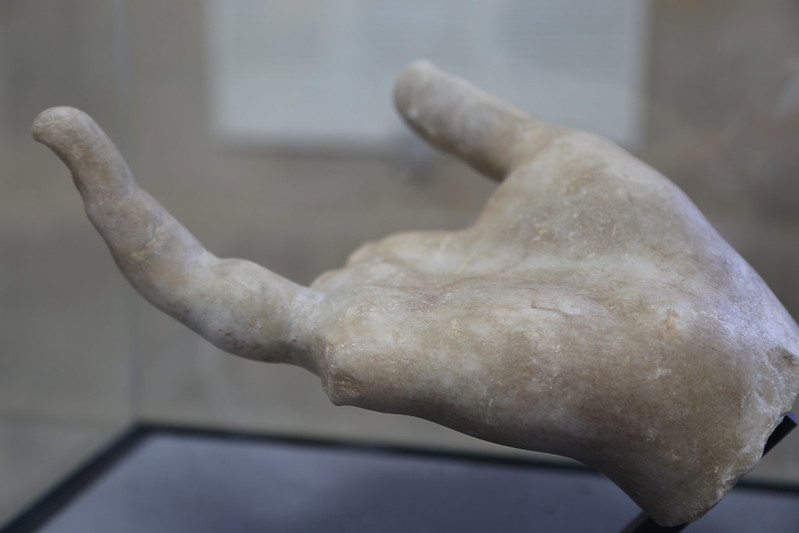
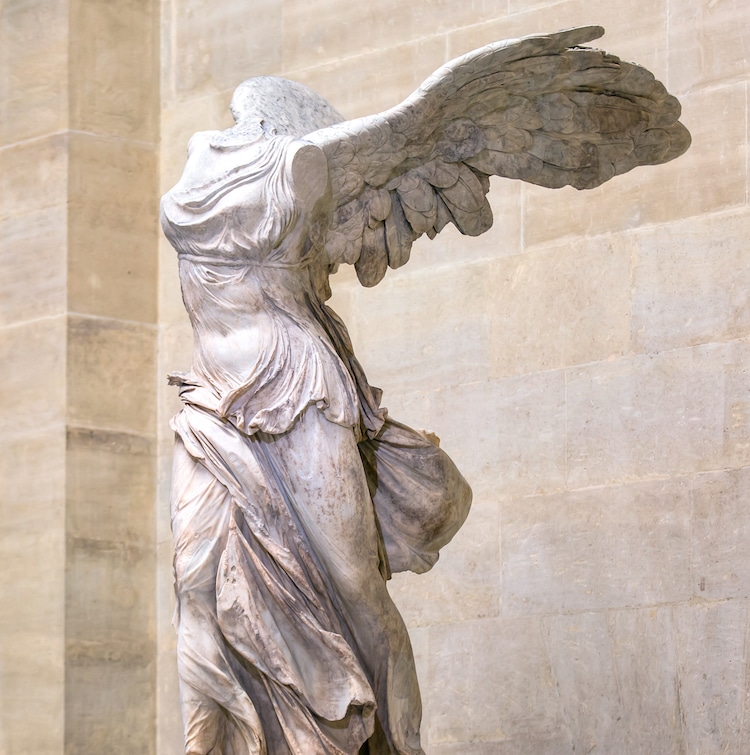
The Winged Victory of Samothrace (Photo:muratartviaShutterstock)
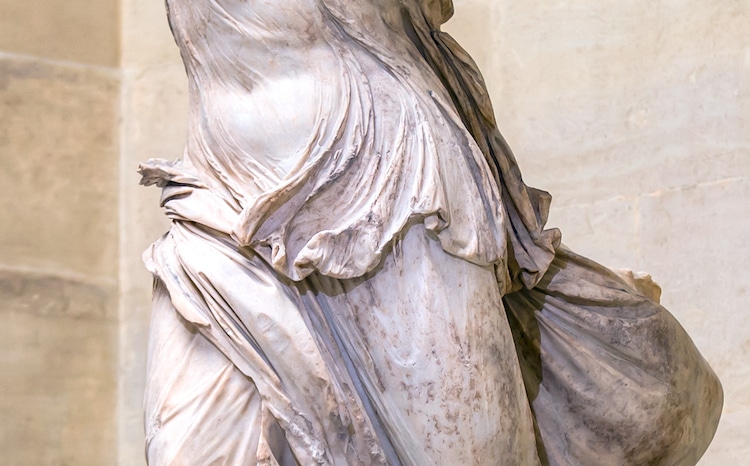
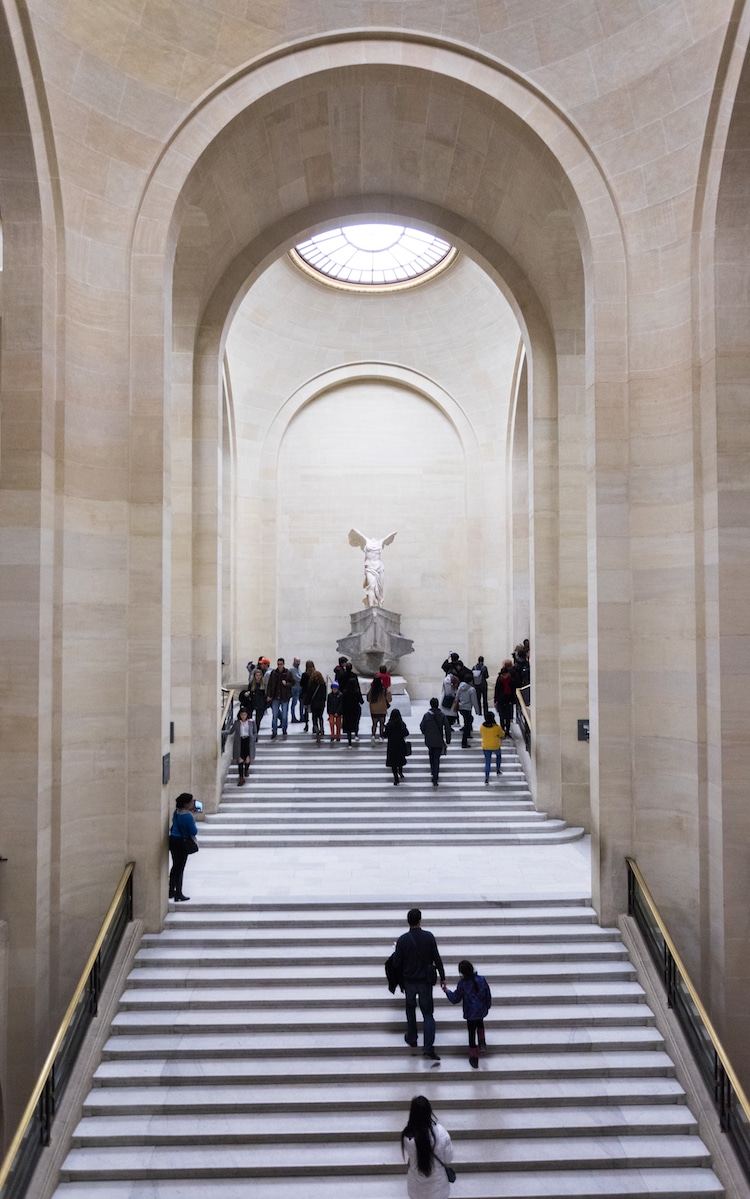
Daru Staircase (Photo:jackbollaviaShutterstock)